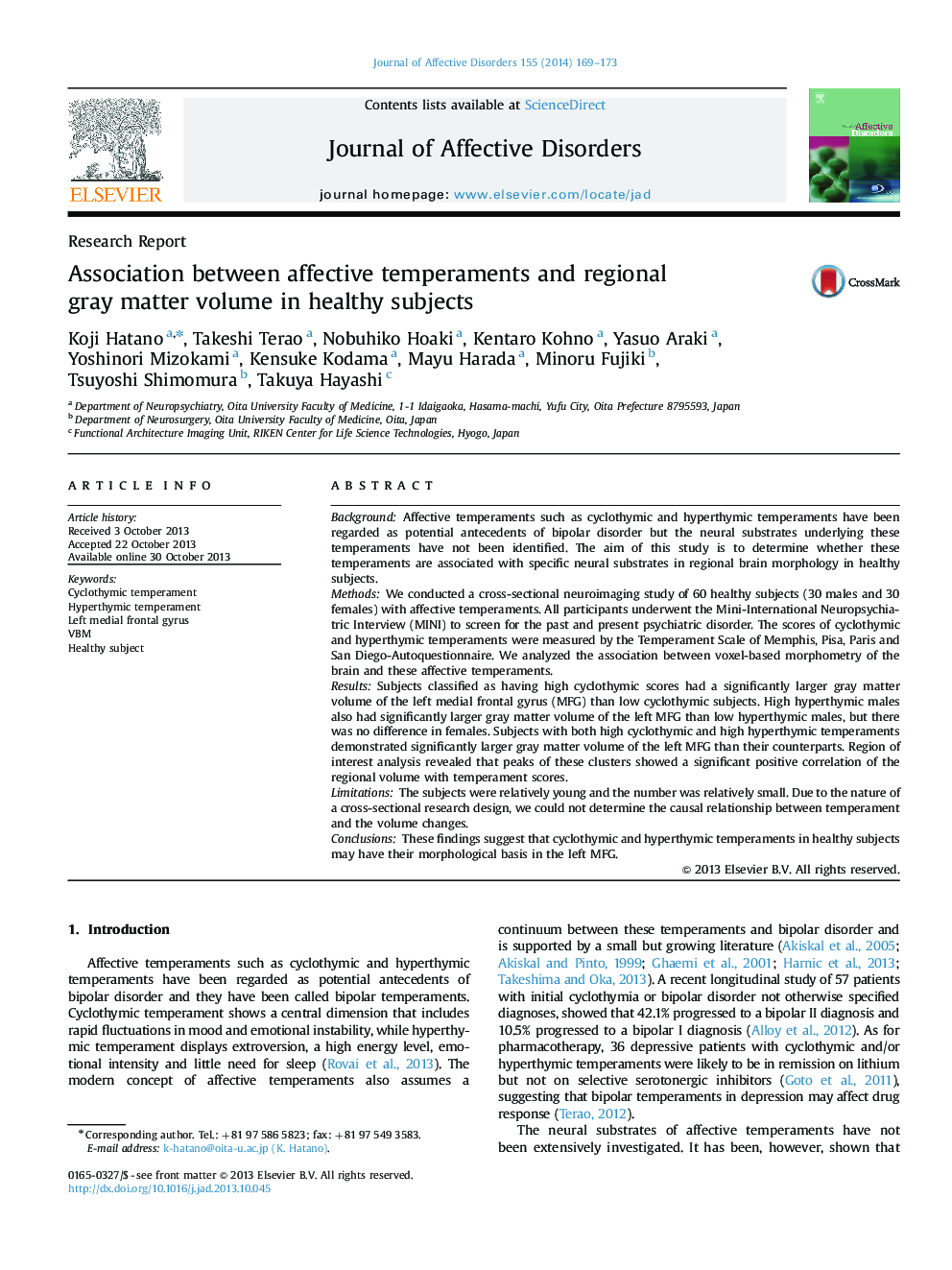| کد مقاله | کد نشریه | سال انتشار | مقاله انگلیسی | نسخه تمام متن |
|---|---|---|---|---|
| 6233325 | 1608170 | 2014 | 5 صفحه PDF | دانلود رایگان |
BackgroundAffective temperaments such as cyclothymic and hyperthymic temperaments have been regarded as potential antecedents of bipolar disorder but the neural substrates underlying these temperaments have not been identified. The aim of this study is to determine whether these temperaments are associated with specific neural substrates in regional brain morphology in healthy subjects.MethodsWe conducted a cross-sectional neuroimaging study of 60 healthy subjects (30 males and 30 females) with affective temperaments. All participants underwent the Mini-International Neuropsychiatric Interview (MINI) to screen for the past and present psychiatric disorder. The scores of cyclothymic and hyperthymic temperaments were measured by the Temperament Scale of Memphis, Pisa, Paris and San Diego-Autoquestionnaire. We analyzed the association between voxel-based morphometry of the brain and these affective temperaments.ResultsSubjects classified as having high cyclothymic scores had a significantly larger gray matter volume of the left medial frontal gyrus (MFG) than low cyclothymic subjects. High hyperthymic males also had significantly larger gray matter volume of the left MFG than low hyperthymic males, but there was no difference in females. Subjects with both high cyclothymic and high hyperthymic temperaments demonstrated significantly larger gray matter volume of the left MFG than their counterparts. Region of interest analysis revealed that peaks of these clusters showed a significant positive correlation of the regional volume with temperament scores.LimitationsThe subjects were relatively young and the number was relatively small. Due to the nature of a cross-sectional research design, we could not determine the causal relationship between temperament and the volume changes.ConclusionsThese findings suggest that cyclothymic and hyperthymic temperaments in healthy subjects may have their morphological basis in the left MFG.
Journal: Journal of Affective Disorders - Volume 155, February 2014, Pages 169-173
